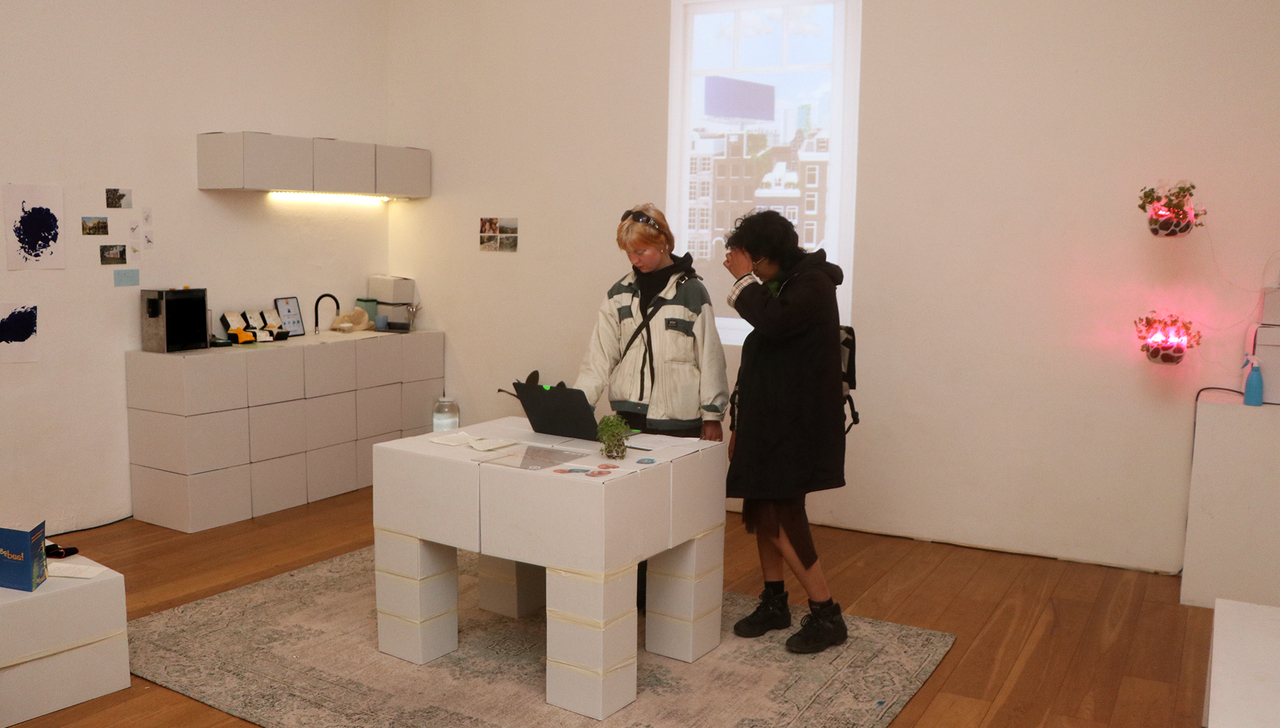
LUPA
Visualising Allergens in Packaged Foods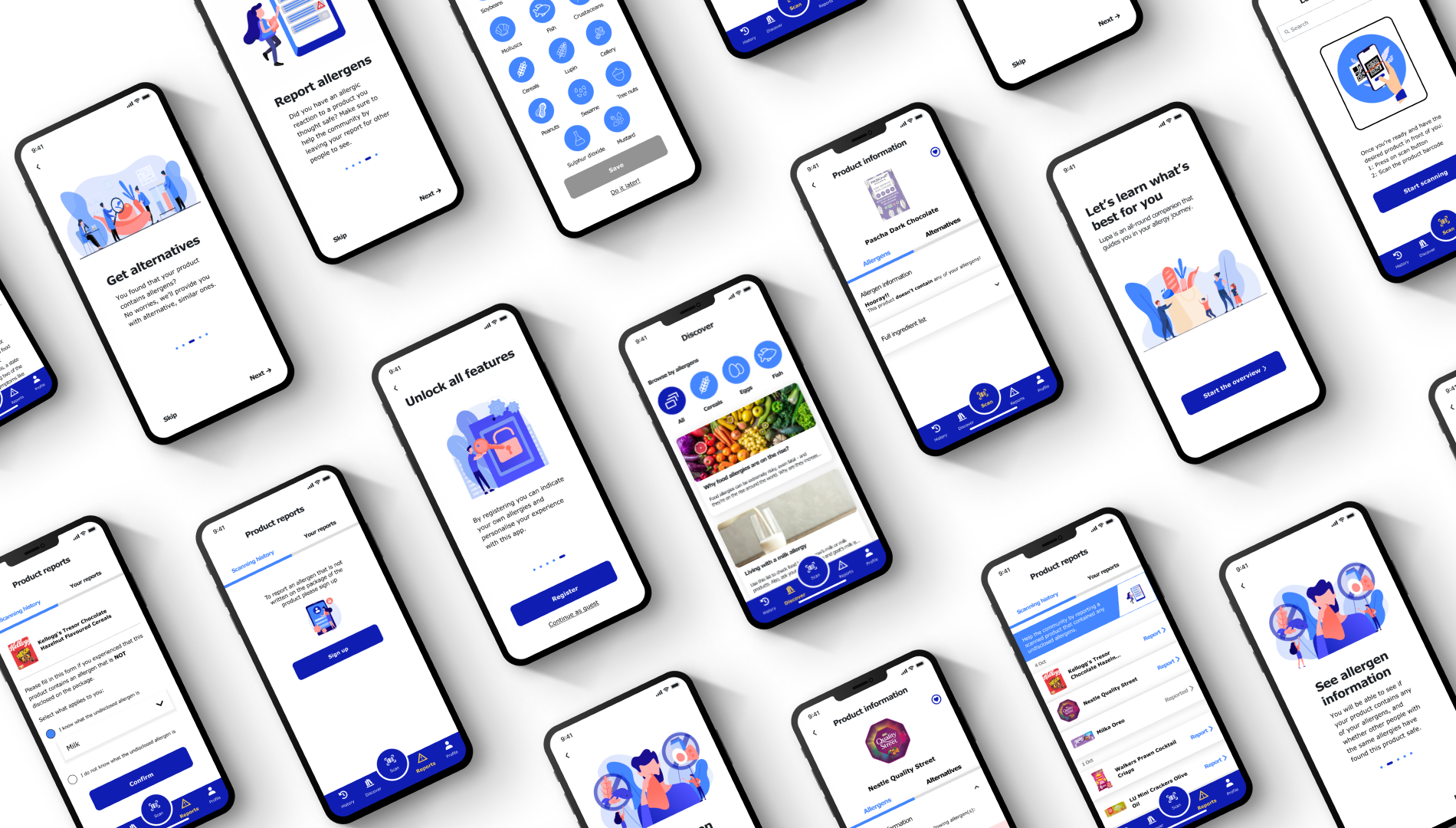
-
Client:
Digital Catapult
- Team:
-
Disciplines:
UX/UI, Visual Design, Product Design
-
Schoolyear:
2021-2022
Despite living in times of record advancements in medicine, serious food-related allergic reactions are at their highest. More often than not, pre-packaged foods come with missing or unreadable allergen information and ambiguous icons, hindering all people and especially those with accessibility issues. Lupa is an app that tackles accidental consumption of allergens by providing a clearer visualisation and personalised product recommendations.
We were challenged to provide a few solutions, one of which an app, to improve the quality of life for people with food allergies. How do we improve the way allergens are visualised? How do we prevent uncertainty in products? And how do we do this while keeping in mind those with vision impairment issues? We developed an all-encompassing research plan to answer these questions.
Research
To ensure thoroughness, we approached the problem space from various perspectives. Our interviews with people suffering from allergies confirmed their struggles with missing or unreadable information on packages, but also unveiled frustrations from limited food choices and reluctance to try new products.
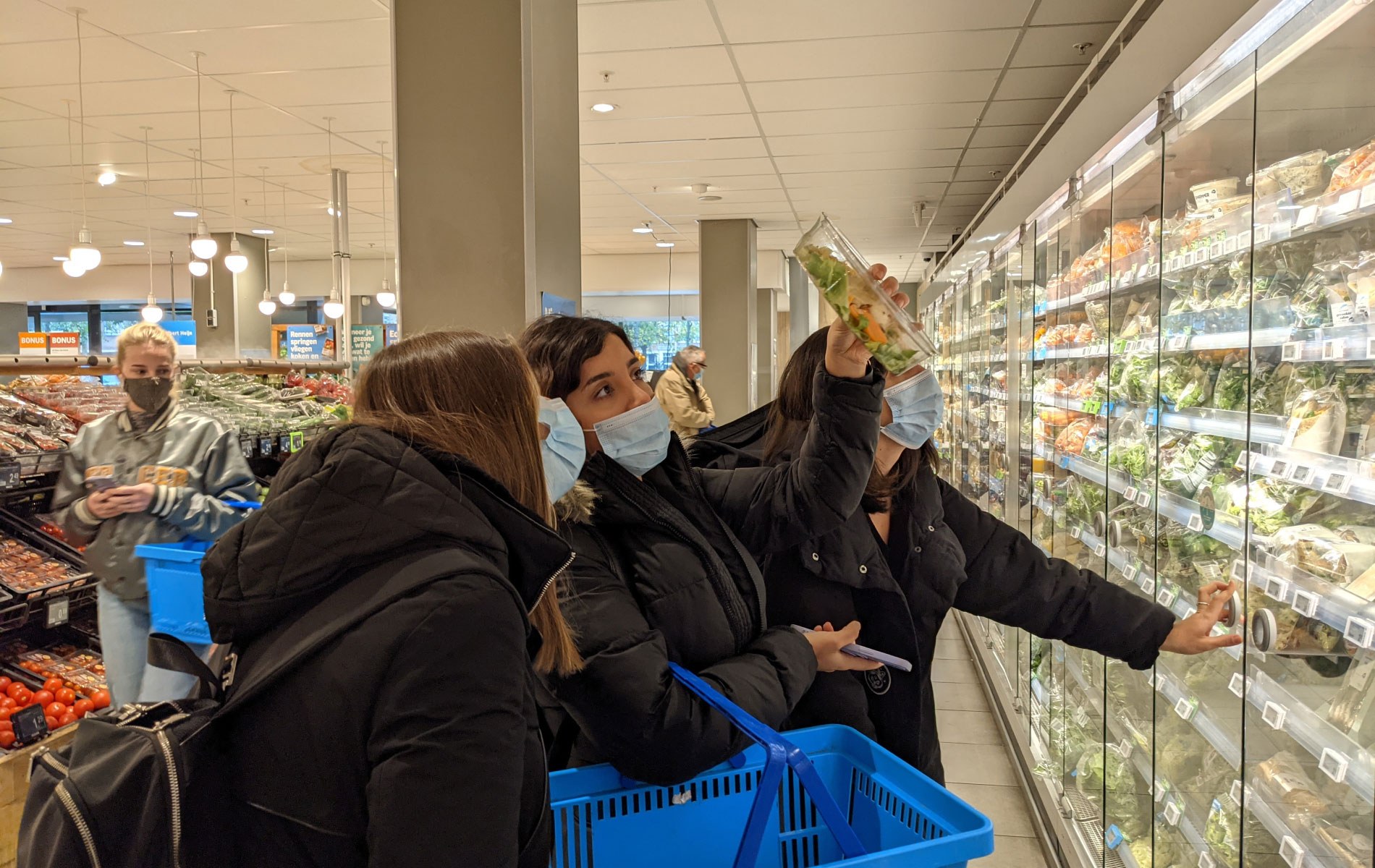
But, to what extent can we, as designers, understand these struggles? To increase empathy, for one week we lived out a scenario where each team member was allergic to some foods, and new insights emerged. For example, we were left uncertain when allergens were presented with a visual icon since their meaning is often ambiguous. This led us to dive deeper into the academic literature. From our literature review, we concluded that to ensure optimal allergen visualisation, we would need to use both text-based and visual cues.
Finally, we researched accessibility in design, to ensure that our solutions do not exclude people who already have a hard time navigating information on physical products.
Personalise, personalise, personalise…
We wanted this app to resemble a companion who is mindful and aware of the user’s own allergy condition. Thus, it provides users an opportunity to make a pre-set of their allergens, so it can give better alerts later when they are detected in products.
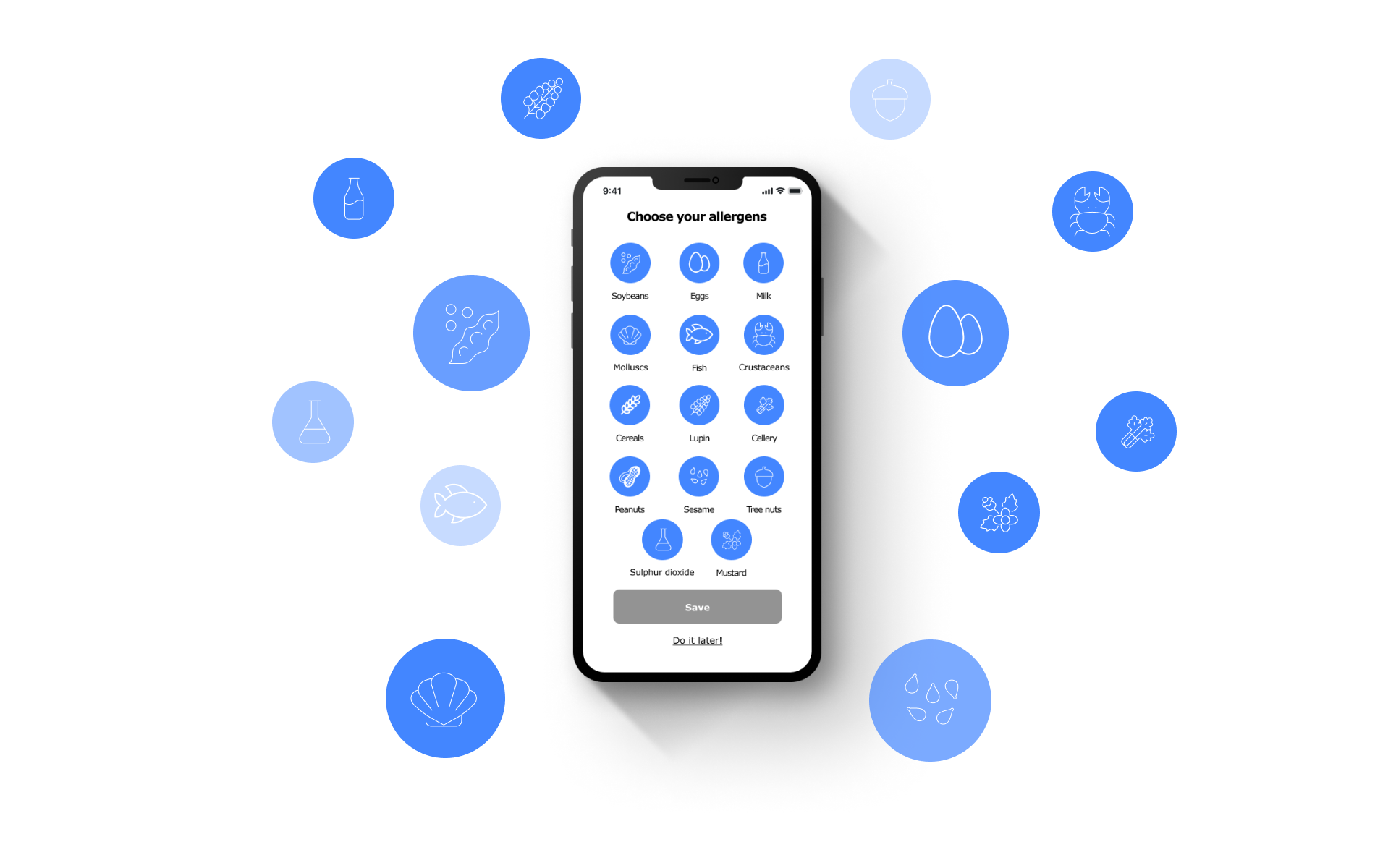
Re-designing the experience of searching for allergens
We implemented barcode scanning into the app as it is the most considerate of a user’s time. Once scanned, the app shows whether a user’s personal allergens are present in the product. Allergens are always accompanied by an intuitive icon, for faster recognition.
Increasing trust in a product
A big challenge in this project was finding a way to alert users about the presence of an allergen which the manufacturer has failed to mention. While infrequent, this is an existing problem which has led to people dying. So, tackling it was imperative.
We designed a system where users who have an allergic reaction to an undisclosed allergen can report the product. Once people with the same allergy scan this product, they are alerted about user-reported allergen presence.
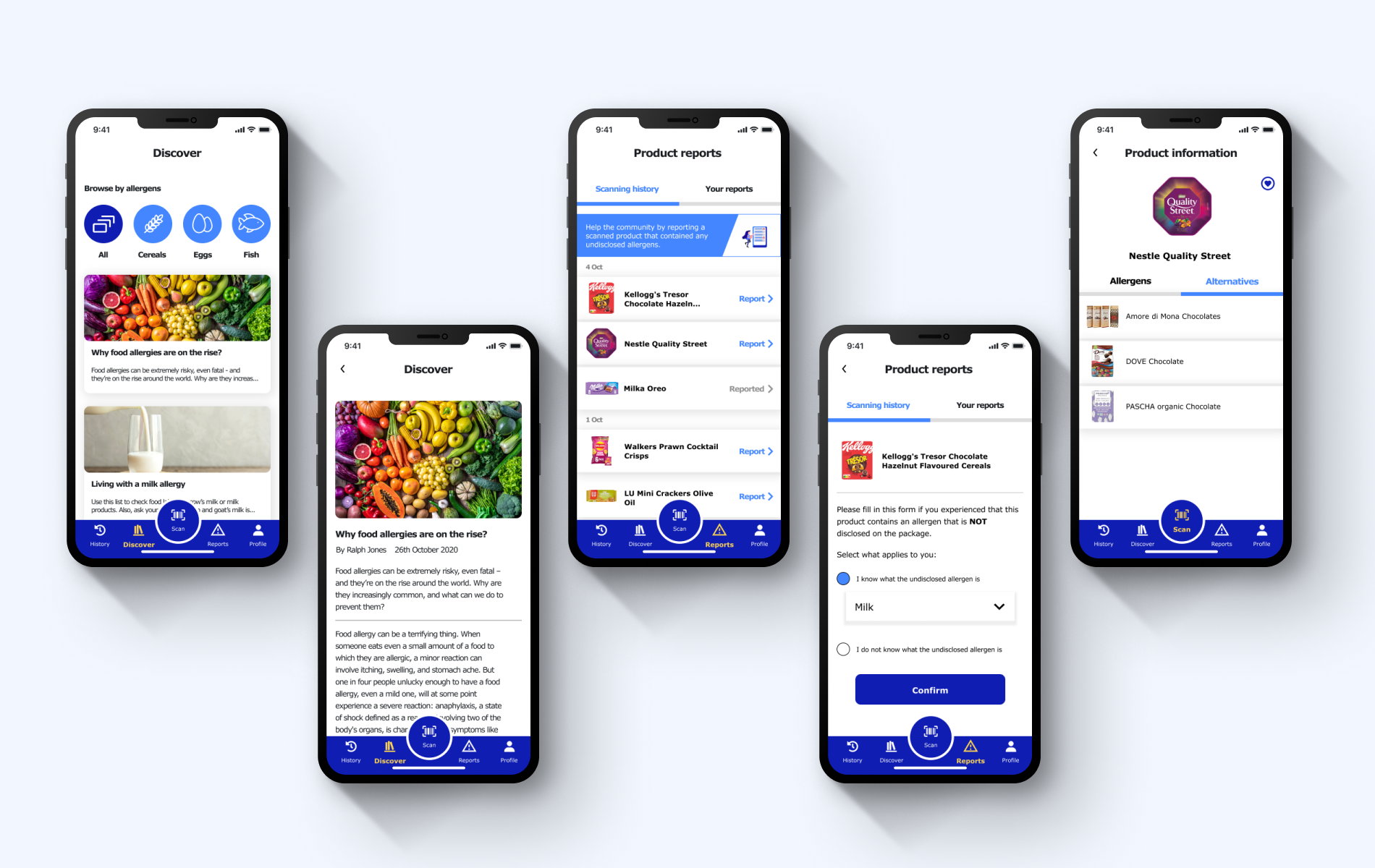
Can we make shopping enjoyable?
Our interviews unveiled fears of tasting new products and frustrations related to the whole grocery shopping experience. This motivated us to do more than just increase safety – we wanted to give people an opportunity to experiment. For each product that is scanned, Lupa takes into consideration a user’s allergens and searches the database for similar and most importantly – safe to eat products.
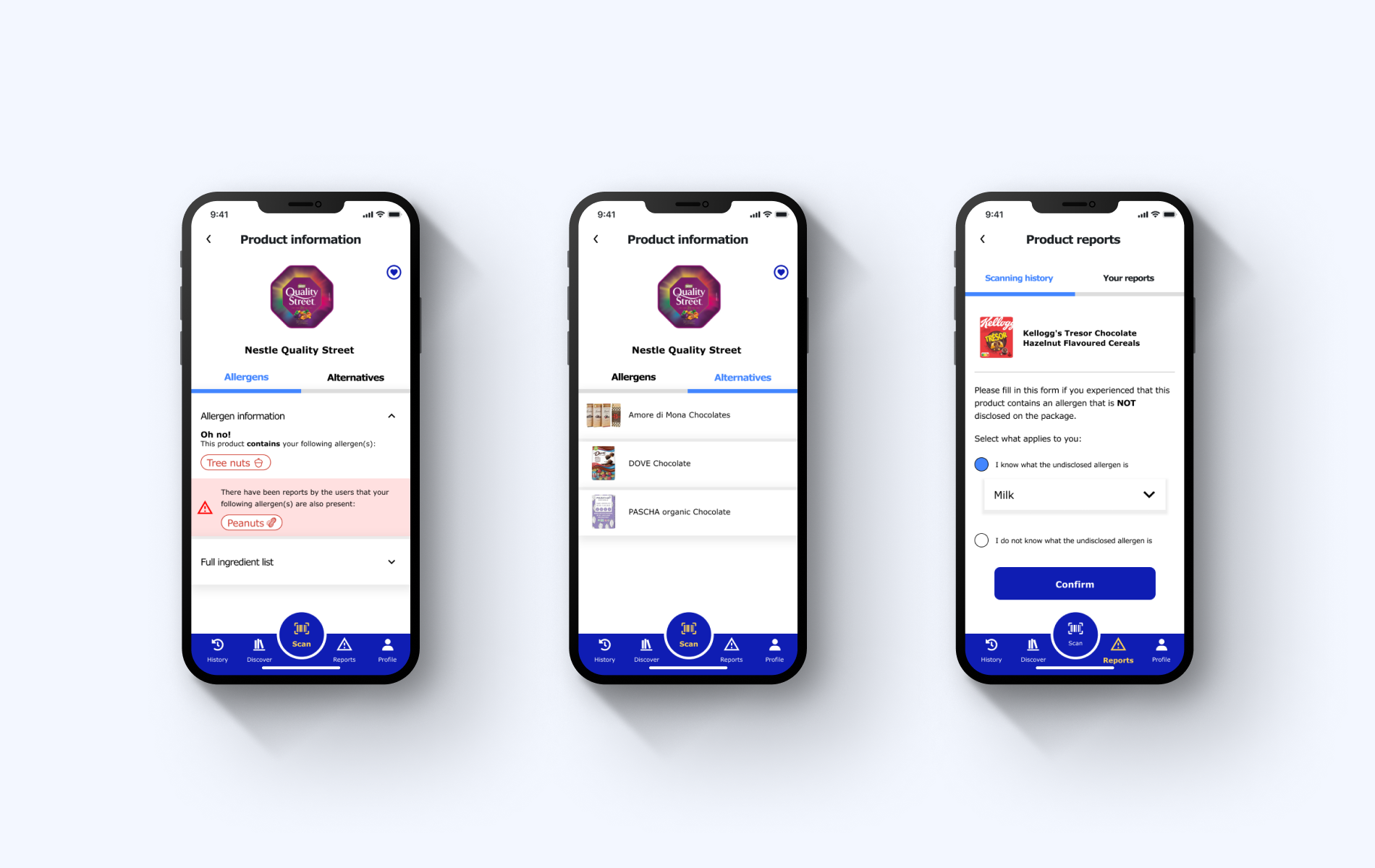
Accessibility
With regards to accessibility, we defined success as meeting the following criteria: good colour contrast, usable fonts, icons always accompanied by text and designing in a logical flow so people using screen magnifiers know what to expect on the screen.
In-store solution
To our client we also proposed a software update for budget scanners already present in supermarkets. First, users generate a personal QR code online containing their allergens and load the information in the budget scanner. If the products that are subsequently scanned are unsafe, the scanner provides an audio-visual cue.
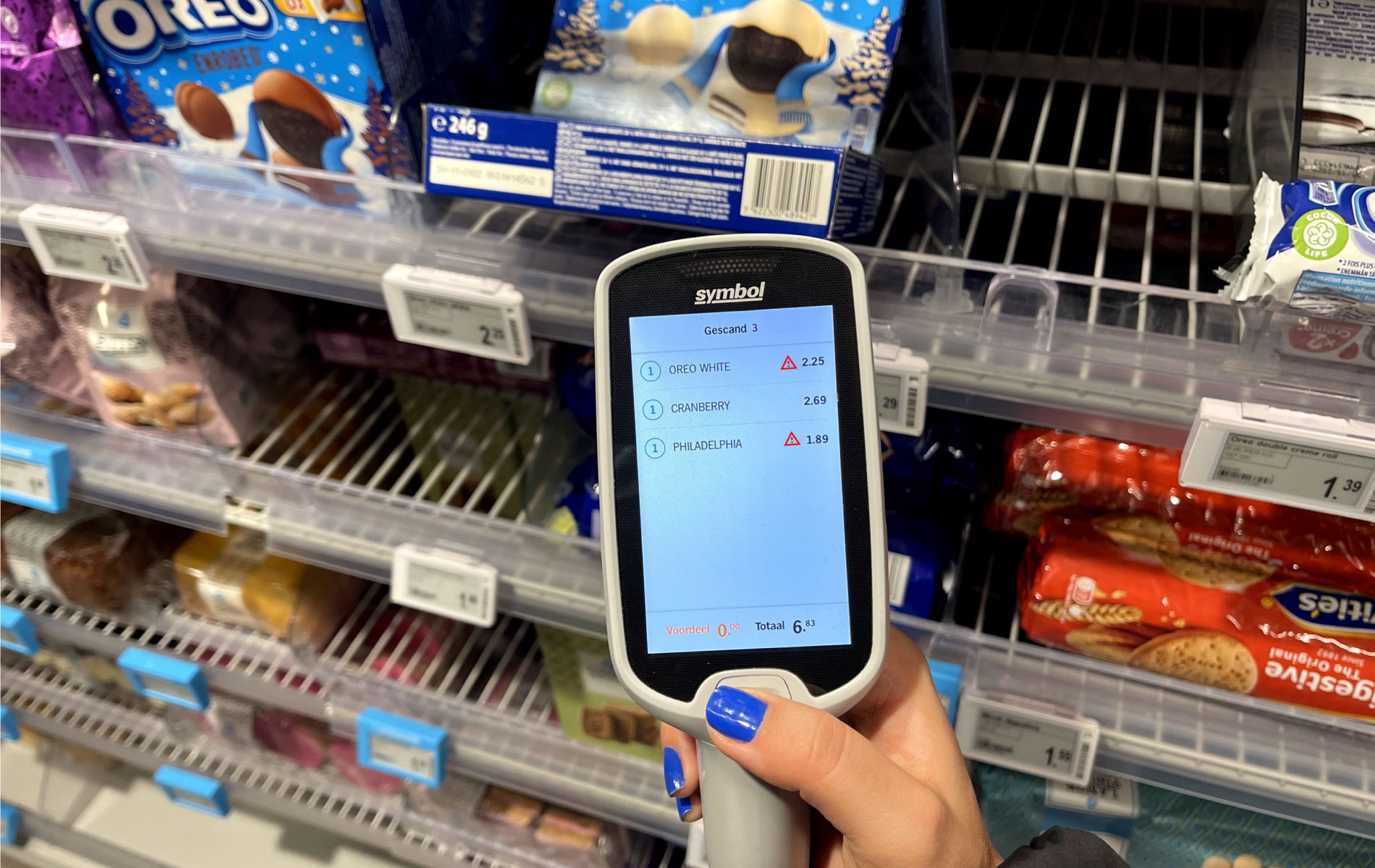
In the long run...
While these solutions provide immediate alleviation of the problems people with food allergies face, our hopes go beyond. The more these issues are addressed, the more awareness is raised, and it is our hope that awareness will lead to manufacturers being more mindful both regarding packaging design and providing allergy-free alternatives.

